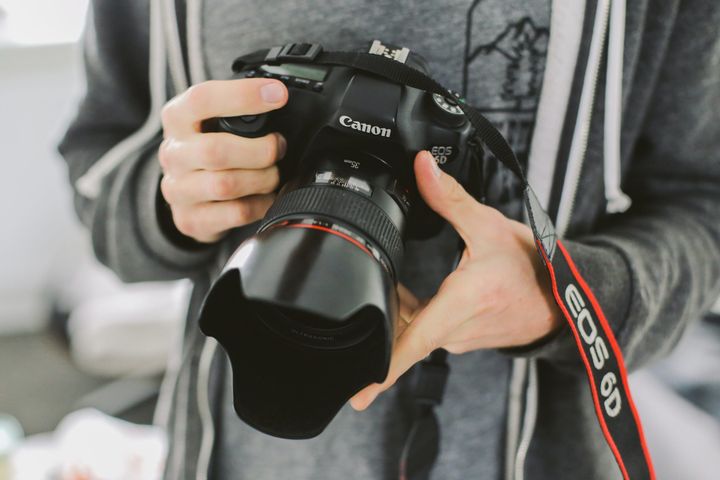Fujifilm X‑Half: A Tiny Marvel in Vertical Photography
Fujifilm’s X-Half is a tiny retro-styled camera with a vertical twist. No RAW, no previews—just pure fun. It’s like handing your inner photo nerd a toy and saying, “Go play!”

Fujifilm has done it again—this time with the X‑Half, a camera so delightfully peculiar that only photographers—or true lovers of photography—can fully appreciate it. It’s compact, playful, and unapologetically analog in spirit.
What catches your eye is the sensor orientation: it’s vertical, not horizontal. The X‑Half uses an 18‑megapixel, 1‑inch backside‑illuminated CMOS sensor, sized 8.8 × 13.3 mm—literally half the width of Fujifilm’s APS‑C sensors . With a 32 mm equivalent f/2.8 fixed Fujinon lens, it’s a perfect street-ready focal length that slips into a pocket or jacket.
But this camera isn’t about specs—it’s about experience.
A Nostalgic Return to Film Habits
The entire aspect of the X‑Half is rooted in analogue film nostalgia. It mimics traditional 4×3 roll film by allowing you to shoot in halves. Push a lever and the camera captures two adjacent frames—one photo, or even one photo and one video—stacked side by side.
There’s even a “Film Camera” mode: set it for 36, 54, or 72 shots, and you can’t see what you’ve taken until the ‘roll’ is complete. Then, via the X‑Half app or by downloading photos to your computer, you finally review the contact sheet—just like in the darkroom . It slows you down. Makes each click intentional.
JPEG-Only Philosophy: Instant Gratification
The X‑Half shoots JPEG only—no RAW files. You get full JPEGs processed in-camera with 13 classic Fujifilm film simulations, including Velvia, Classic Chrome, Acros, and more . There are even creative filters like “Light Leak,” “Expired Film,” and “Double Exposure”.
What you shoot is what you get. Unlike RAW shooters who endlessly tweak in Lightroom, this camera forces presence. You compose, shoot, and move on.
Compact Size, Optical Viewfinder & More
- Weight: Approximately 240 grams (8.5 oz)
- No electronic viewfinder or IBIS—instead, it has a clean optical direct-view finder
- 2.4‑inch touchscreen for framing, film simulation previews, and simple settings
- Focus is swift, with face/eye detection and manual focus ring
There’s no continuous burst, no RAW. But that’s the design choice. Fujifilm embraced minimalism, roughly £700–$850 price point, far below their flagship X100V but still premium—making it feel special, not disposable .
Why It Works (Despite the Trade-Offs)
- Vertical by default – The sensor orientation, plus the lever to shoot two frames or photo + video, aligns perfectly with smartphone-first content. This camera makes you think vertical .
- Analogue behavior – Film-simulated shots, no instant playback, and sequence rolls lend a mindful creative pace .
- Creative simplicity – Fixed lens, fixed aspect, fixed format. You focus on composition, not gear upgrades.
- Built-in review tools – Diptych mode via X-Half app, instant Instax printer support, and contact sheet previews enrich the analog experience .
The Catch? Expectations
This isn’t for pixel peepers. Some reviewers note limited dynamic range and slow touchscreen responsiveness. The JPEG pipeline is baked; once the image is captured, you’re stuck with it . And filters baked in can’t be undone.
Yet many find its quirks magical—a deliberate break from perfection . If you’re chasing cinematic footage or high dynamic range, look elsewhere. But if you crave personality, surprise, and analogue charm in your vertical shots, this is it.
My Take
My X100V remains my creative mainstay: a fixed-lens powerhouse that gives me APS-C freedom and RAW flexibility. But the X-Half has caught my eye in a genuine way. It’s affordable, pocketable, and playful in a world drowning in specs and megapixels.
I can see handing it to a teenager or a family member—no perfection expected, no fear of ruining your lens. It’s about noticing moments, exploring composition, playing with diptychs.
If you care about vertical visuals, analogue feel, and in-camera creativity, the X-Half offers more than novelty. It’s a mindset shift.
Your Thoughts?
Have you tried the X‑Half? Or are you someone who loves the film‑like workflows Fujifilm keeps returning to? I’d love to hear how you use it—or why it frustrates you. Let’s talk, compare notes, and maybe even swap some diptychs.
And if there’s enough interest, I’d love to get a unit in hand to do a proper long‑term review. Thoughts?

